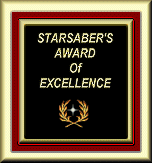|
Mixed-signal products such as cellular phones consist of "important"
digital functions that appeal to marketers and consumers and "unimportant"
analog functions that have to relate to the real world. The struggle
to build these analog subsystems, in turn, requires communication
and cooperation between RF designers and their colleagues who
design analog ICs. Unfortunately, these two creatures belong to
different species. They look at problems in different ways, with
different tools, and they speak totally different languages.
Every Transistor Tells A Story
Until recently, RF designers used RF transistors one at a time,
painstakingly connecting them together with a network of inductors,
capacitors, and an occasional resistor for biasing. RF designers
would wring as much performance as possible out of each transistor,
using S parameters to navigate through a Smith chart. For them,
DC biasing remained a minor consideration that a tired professor
explained on a rainy Thursday afternoon in Microwave Amplifiers
class to an uncomprehending audience. System impedance was 50
ohms because the coax impedance was 50 ohms and dBm relative to
50 ohms was the standard unit of measure.
Integration And Simulation
The techniques and mindset of analog-IC designers, on the other
hand, got their start with the first monolithic op amps and haven't
changed since. Primary concerns are DC biasing, DC gain, and offset
voltages. There is no standard impedance. ICs submit to the Laws
of Ohm and Kirchoff as written down by his prophet Nagle. Circuits
are a marriage of voltages and currents; impedances are the issue
of that union and come in a variety of values, but generally not
50 ohms. Transistors are cheap and come in all shapes and sizes.
Whereas an RF designer considers a 20-transistor RF IC high integration,
an IC designer thinks nothing of a 20-transistor bias circuit.
Of course, those extra transistors do have benefits. An IC designer
can coax a +24 dBm input-referred third-order intercept out of
a mixer with just -10 dBm LO power. But the IC designer would
have trouble communicating that accomplishment to the RF designer
because the IC designer talks of peak LO drive in mV, harmonic
distortion in percent, and impedance matching for an optimum noise
figure.
Different Tools
An RF designer measures amplifier noise with a noise figure meter
and an excess noise ratio source and gives the answer in dB. An
IC designer shorts the same amplifier's input to ground, measures
noise at the output, divides by the gain, divides again by the
square root of the bandwidth, and gives you a figure in nV/ÃHz.
Every RF designer's bench includes a spectrum analyzer, signal
generator (now synthesized), and RF power meter. On the IC designer's
desk are a Sun Sparc station, SPICE-based analog simulator, and
process models. The technician's bench has an oscilloscope, a
low-distortion audio signal generator, and a DMM.
Different Solutions
One of the offshoots of the communications gap between RF and
IC designers is each group's woeful misunderstanding of the other's
needs and requirements. Wireless designs, for example, constantly
drive toward integration and power reduction. Unfortunately, when
an RF designer asks an IC designer to integrate certain functions
and reduce power by 30%, the desired result often violates the
laws of physics.
To truly get the worst of both worlds, ask an RF designer to specify
a low-noise amplifier for an IC designer. The RF designer will
specify 50 ohms at every port (although higher load impedances
at the output port would greatly reduce power consumption), along
with noise figures in dB and signal levels in dBm. Meanwhile,
the IC designer's analysis will show why a one-transistor common-emitter
amplifier biased by a 20-transistor bias circuit is the most elegant
solution. The LNA's input impedance will depend on the bias current
of the transistor and its biasing network, but will be "high"
at DC. The input will terminate with a 50-ohm "impedance
matching" resistor, immediately decreasing the S/N ratio.
If this design were for a cellular phone, somewhere in the background
a system engineer would be doling out the scraps of power left
over after the digital designers have eaten their fill of the
battery pack. With the system engineer's expertise in signal analysis
and ignorance of semiconductor physics, the target power budget
will be 30% lower than the previous discrete design so that the
company's marketing department can tout longer battery life. Of
course, the power reduction can't come from the digital functions.
(After all, the digital stuff is more important, right?) Given
the current lack of communication between RF and IC designers,
a potential disaster is brewing.
IC designers are now designing RF ICs. Traditional boundaries
between these disciplines must disappear. IC designers have to
learn to think like RF designers and vice versa. No tunnel vision,
no blinders, no narrow boundaries. Only cooperation will lead
to success.
|

